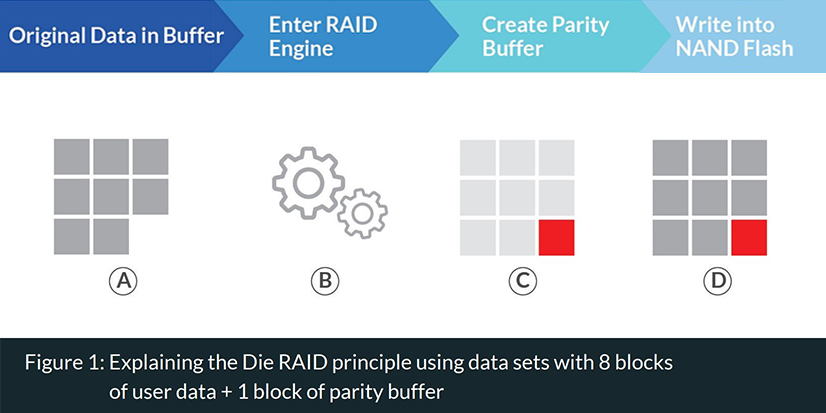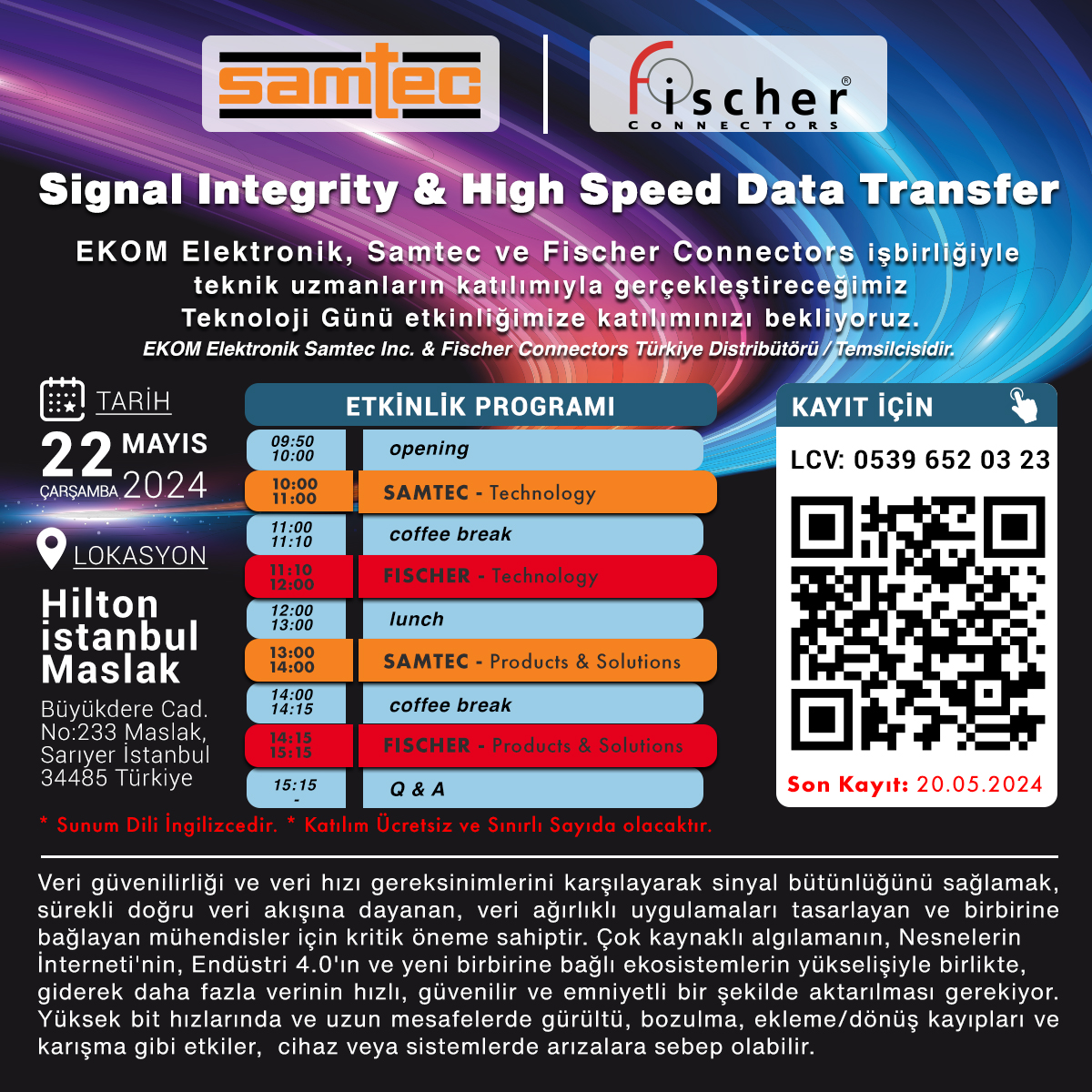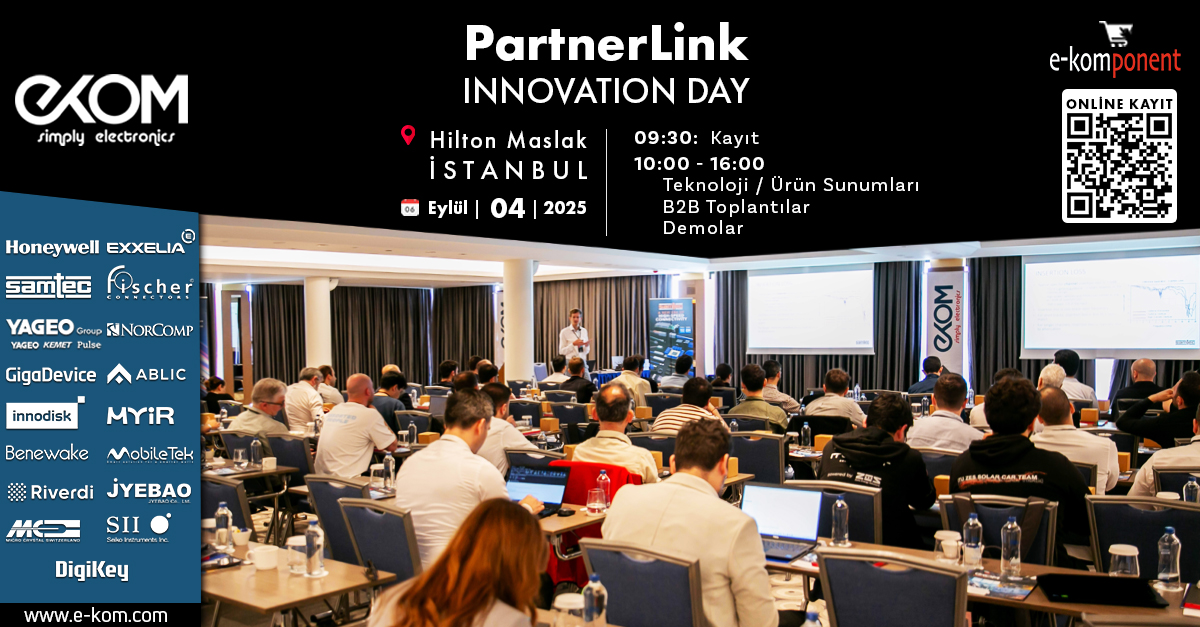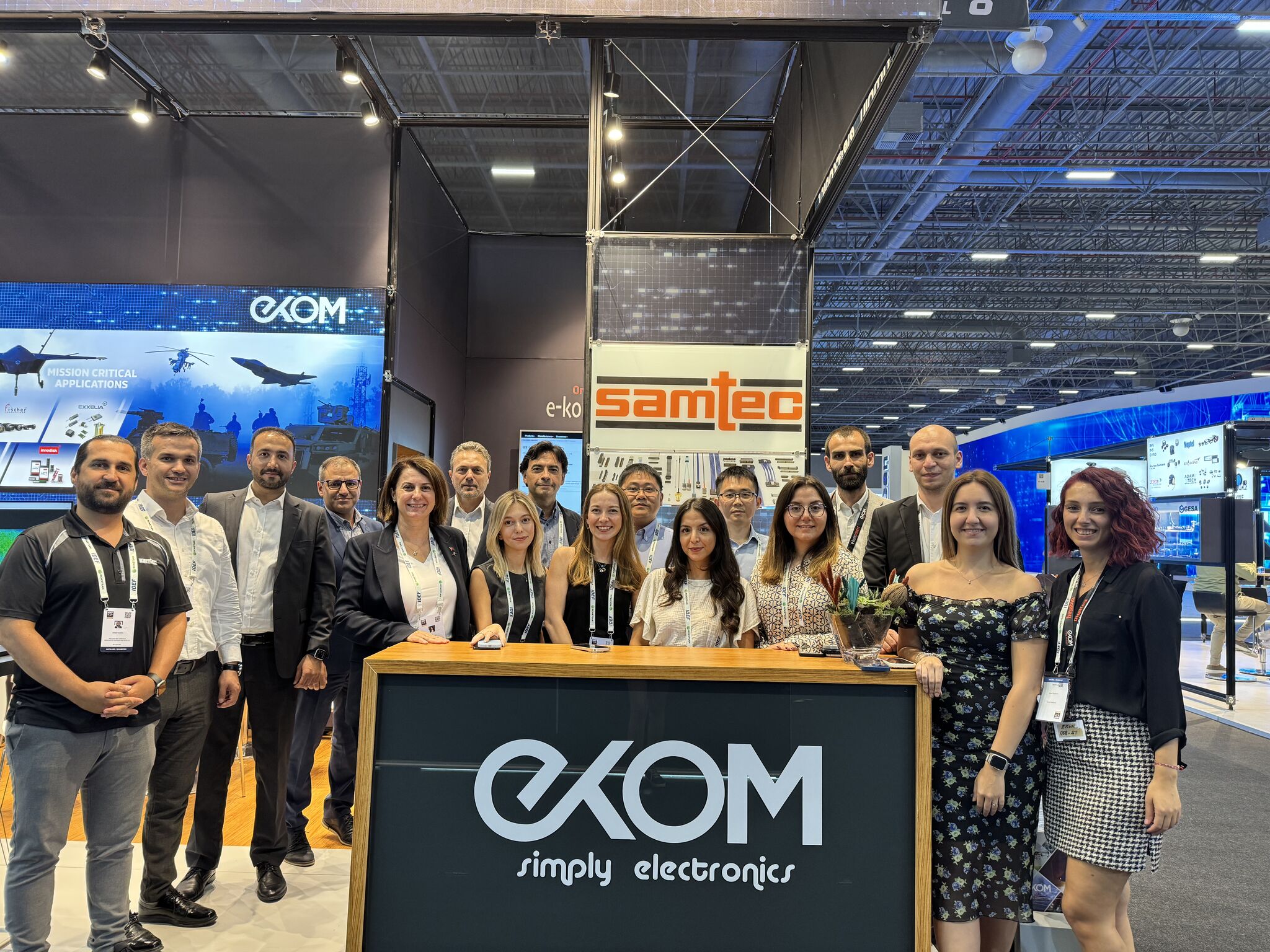Innodisk Die RAID
As the physical size of NAND flash cells reduces, more cells are accommodated per unit area, increasing storage capacity. However, this may lead to higher interference with the charge trapped in the cell, resulting in a larger error bit rate. Each cell can hold more bits, which means the buffer between voltage levels decreases and read errors become more likely. Without countermeasures, this leads to failures in modern NAND flashes after a short time. Error correction is therefore one of the most important functions in memory products. LDPC is currently the standard ECC function for most SSDs. With it, a very precise identification of the original bit sequence after an error is possible.
Die RAID is another important tool for correcting error bits. If the so-called LDPC engine is not able to correct the error bit, the Die RAID engine performs a RAID recovery to fix the error. If this is not possible, it marks the block as faulty. RAID acts as an additional layer against error bits and increases the lifetime of SSDs. It is suitable for all applications that have a high data throughput and ensures there that the SSD can provide continuous performance in the long run.






